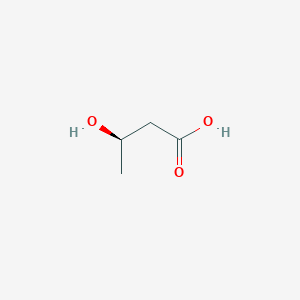Details of Metabolite
| Full List of Protein(s) Regulating This Metabolite | ||||||
|---|---|---|---|---|---|---|
| Hydrolases (EC 3) | ||||||
| Phosphoinositide lipid phosphatase (PLIP) | Click to Show/Hide the Full List of Regulating Pair(s): 1 Pair(s) | |||||
| Detailed Information |
Protein Info
 click to show the details of this protein click to show the details of this protein
|
|||||
| Regulating Pair |
Experim Info
 click to show the details of experiment for validating this pair click to show the details of experiment for validating this pair
|
[1] | ||||
| Introduced Variation | Knockout of Ptpmt1 | |||||
| Induced Change | 3-Hydroxybutyric acid concentration: decrease | |||||
| Summary | Introduced Variation
|
|||||
| Disease Status | Fatty liver disease [ICD-11: DB92] | |||||
| Details | It is reported that knockout of Ptpmt1 leads to the decrease of 3-hydroxybutyric acid levels compared with control group. | |||||
| Lyases (EC 4) | ||||||
| Cystathionine gamma-lyase (CTH) | Click to Show/Hide the Full List of Regulating Pair(s): 1 Pair(s) | |||||
| Detailed Information |
Protein Info
 click to show the details of this protein click to show the details of this protein
|
|||||
| Regulating Pair |
Experim Info
 click to show the details of experiment for validating this pair click to show the details of experiment for validating this pair
|
[2] | ||||
| Introduced Variation | Knockout of Cth | |||||
| Induced Change | 3-Hydroxybutyric acid concentration: decrease (FC = 0.39) | |||||
| Summary | Introduced Variation
|
|||||
| Disease Status | Organic acid disorderss [ICD-11: 5C50] | |||||
| Details | It is reported that knockout of Cth leads to the decrease of 3-hydroxybutyric acid levels compared with control group. | |||||
| Oxidoreductases (EC 1) | ||||||
| D-beta-hydroxybutyrate dehydrogenase (BDH1) | Click to Show/Hide the Full List of Regulating Pair(s): 1 Pair(s) | |||||
| Detailed Information |
Protein Info
 click to show the details of this protein click to show the details of this protein
|
|||||
| Regulating Pair |
Experim Info
 click to show the details of experiment for validating this pair click to show the details of experiment for validating this pair
|
[3] | ||||
| Introduced Variation | Overexpression of BDH1 | |||||
| Induced Change | 3-Hydroxybutyric acid concentration: decrease | |||||
| Summary | Introduced Variation
|
|||||
| Disease Status | Hepatocellular carcinoma [ICD-11: 2C12] | |||||
| Details | It is reported that overexpression of BDH1 leads to the decrease of 3-hydroxybutyric acid levels compared with control group. | |||||
| Transferases (EC 2) | ||||||
| Succinyl CoA:3-oxoacid CoA transferase (SCOT) | Click to Show/Hide the Full List of Regulating Pair(s): 2 Pair(s) | |||||
| Detailed Information |
Protein Info
 click to show the details of this protein click to show the details of this protein
|
|||||
| Regulating Pair (1) |
Experim Info
 click to show the details of experiment for validating this pair click to show the details of experiment for validating this pair
|
[3] | ||||
| Introduced Variation | Knockdown (shRNA) of OXCT1 | |||||
| Induced Change | 3-Hydroxybutyric acid concentration: increase | |||||
| Summary | Introduced Variation
|
|||||
| Disease Status | Hepatocellular carcinoma [ICD-11: 2C12] | |||||
| Details | It is reported that knockdown of OXCT1 leads to the increase of 3-hydroxybutyric acid levels compared with control group. | |||||
| Regulating Pair (2) |
Experim Info
 click to show the details of experiment for validating this pair click to show the details of experiment for validating this pair
|
[3] | ||||
| Introduced Variation | Overexpression of OXCT1 | |||||
| Induced Change | 3-Hydroxybutyric acid concentration: decrease | |||||
| Summary | Introduced Variation
|
|||||
| Disease Status | Hepatocellular carcinoma [ICD-11: 2C12] | |||||
| Details | It is reported that overexpression of OXCT1 leads to the decrease of 3-hydroxybutyric acid levels compared with control group. | |||||
If you find any error in data or bug in web service, please kindly report it to Dr. Zhang and Dr. Mou.

